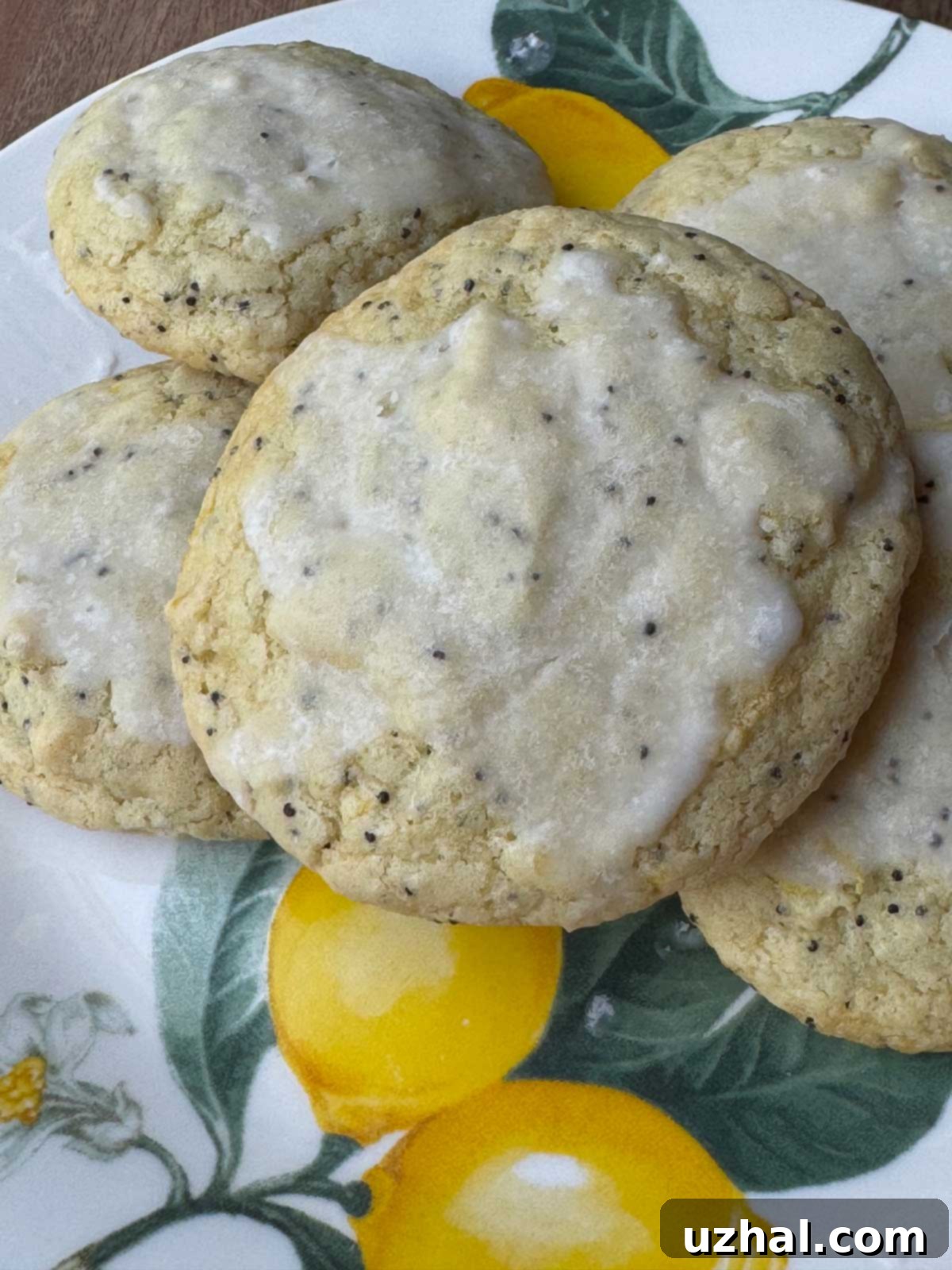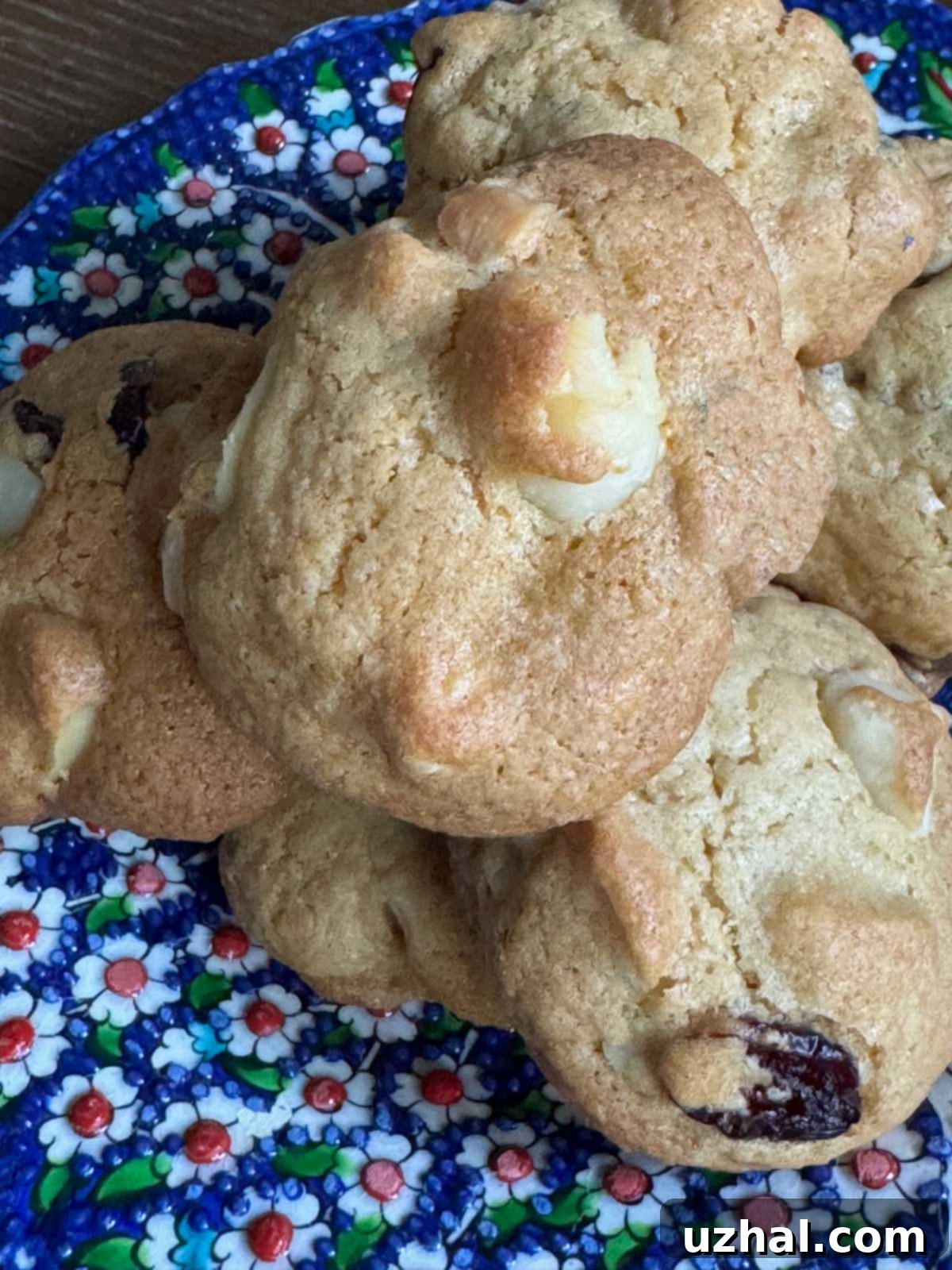Delightful Gluten-Free Rice Flour Cookies: A Versatile & Easy Homemade Recipe
Welcome to the world of truly delightful and surprisingly simple cookies that celebrate the humble rice flour! While I affectionately call them “Ice Cream Cookies” at home – a playful nod to their origin using leftover egg whites from homemade ice cream – these treats are officially known as Simple Rice Flour Cookies. Beyond being an ingenious way to utilize those extra egg whites, they boast a naturally gluten-free profile and an incredible versatility that allows for endless flavor combinations. Imagine customizing your batch with rich chocolate and crunchy nuts, exploring a blend of sweet white chips and tart dried fruit, or even crafting a bright and zesty lemon poppy seed variation. This recipe isn’t just about baking; it’s about culinary creativity and enjoying delicious results with minimal fuss, making it a perfect addition to any gluten-free baking repertoire.

Achieving the Perfect Texture and Flavor in Your Rice Flour Cookies
When you bite into these cookies, you’ll immediately notice their unique character and appealing texture. They gracefully straddle the line between a traditional cookie and something akin to an Italian-style biscuit, characterized by a light, delicate crumb that isn’t overly buttery or excessively sweet. This subtle sweetness allows the other flavors to truly shine through, making them incredibly adaptable. The texture, a crucial element in any cookie, can be gently nudged in different directions simply by varying the type of oil you incorporate into the dough. I’ve found a particular fondness for extra-virgin olive oil, especially when paired with a vibrant citrus zest and extract, such as orange or lemon. The slight peppery and fruity notes of a good quality olive oil can beautifully complement these brighter flavors, creating a more sophisticated and nuanced cookie experience. For instance, the lemon poppy seed cookies, with their distinct tang and delicate chew, seem almost a world apart from their robust chocolate and nut-laden counterparts. This remarkable adaptability truly showcases just how versatile and forgiving this base recipe for gluten-free rice flour cookies truly is.

The Magic of Brown Rice Flour in Gluten-Free Baking
Both white and brown rice flour are viable options for this recipe, but I personally lean towards brown rice flour for several compelling reasons. Brown rice flour typically offers a slightly more complex flavor profile, often described as nutty and earthy, which adds an intriguing depth to the cookies. Beyond taste, it also brings a greater nutritional value to the table, being richer in fiber and other beneficial nutrients compared to its white counterpart. As a naturally gluten-free flour, it’s an excellent choice for those with dietary restrictions or simply seeking a lighter cookie. However, it’s important to understand that not all brown rice flours are created equal. Different brands can vary significantly in their density and absorbance power, which can dramatically impact the final texture of your baked goods. For instance, a very coarse brown rice flour might yield a slightly grittier cookie, whereas a superfine grind will result in a much smoother, more delicate crumb. When I’m selecting rice flour, particularly for delicate cookies like these or even for gluten-free bread making, I consistently seek out the lightest and finest grind available. While I haven’t specifically tested this recipe with Bob’s Red Mill brand, which is a popular choice for many gluten-free bakers, my general recommendation is to opt for a finely milled brown rice flour to ensure the best possible outcome. This attention to detail in flour selection is absolutely key to achieving that perfectly light and tender texture that makes these gluten-free rice flour cookies so special.

Exploring the Impact of Different Oils on Cookie Texture
The choice of oil in this recipe is not merely a functional decision; it’s an exciting opportunity to fine-tune the cookie’s texture and subtly influence its flavor profile. Through extensive experimentation with various fats, I’ve observed that swapping different oils can lead to distinctly varied results, truly transforming the final product. When baking with high-quality extra-virgin olive oil, the cookies tend to develop a delightfully crisper edge and a more structured, almost shortbread-like crumb. The olive oil also imparts a faint, pleasant fruitiness and sometimes a slight peppery finish that can either serve as a subtle background note or be brought to the forefront when combined with complementary flavors like citrus, as discussed earlier. In contrast, using a more neutral vegetable oil, such as canola or sunflower oil, typically results in a slightly softer, more uniformly tender cookie, maintaining a tender chew throughout. Grapeseed oil, another light and neutral option, surprised me by contributing to a noticeably chewier texture in the finished cookies, a characteristic many find appealing. This distinct difference highlights how various fat structures interact with the other ingredients, particularly the rice flour and cornstarch, to create diverse mouthfeels. For my next baking adventure, I’m particularly keen to experiment with coconut oil. I anticipate that solid coconut oil, when melted and incorporated, might introduce a subtle tropical aroma and a unique richness, potentially yielding a cookie with a firmer, almost melt-in-your-mouth texture that becomes wonderfully crisp as it cools. Understanding these oil variations empowers you to choose the fat that best aligns with your desired cookie experience, whether you’re aiming for crispy, chewy, or soft, ensuring your gluten-free rice flour cookies are exactly how you like them.

Unleash Your Creativity: Endless Flavor Combinations for Rice Flour Cookies
One of the most exciting aspects of these simple rice flour cookies is their incredible adaptability to a myriad of flavor profiles. The light, neutral base dough acts as a perfect canvas, allowing you to create cookies that cater to every craving, season, and occasion. For those who adore a more indulgent, richer cookie, simply load the dough with your favorite fruits, nuts, and chocolate chips. I often find myself dividing a single batch of dough into four portions, transforming them into distinct culinary experiences with minimal effort. Here are some of my go-to variations, each offering a unique sensory journey that will impress:
- Bittersweet Chocolate Chip & Pecan: This classic combination is elevated by the deep, complex notes of bittersweet chocolate, which perfectly contrast the cookie’s subtle sweetness. The buttery crunch of pecans adds a fantastic textural dimension, making each bite incredibly satisfying and sophisticated. This is a timeless favorite for a reason!
- Cranberry, White Chip, & Orange: A vibrant and zesty option that sings with beautifully complementary flavors. The tartness of dried cranberries, the creamy sweetness of white chocolate chips, and the bright, aromatic burst of fresh orange zest (finely grated) create a refreshing and visually appealing cookie. It’s like a little ray of sunshine in every bite, perfect for a cheerful treat.
- Milk Chocolate & Brazil Nut: For a slightly sweeter, creamier chocolate experience, milk chocolate chips are an excellent choice. When paired with the distinct richness and delicate, almost buttery crunch of Brazil nuts, this variation offers a comforting and luxurious treat that feels truly special.
- Butterscotch Walnut: A nostalgic and warmly spiced option that evokes feelings of comfort. The rich, caramel-like notes of butterscotch chips meld beautifully with the earthy, slightly bitter undertones of chopped walnuts, creating a hearty and comforting cookie that’s absolutely perfect for a cozy afternoon or an autumnal gathering.
- Lemon Poppy Seed: This variation truly stands out with its bright, tangy, and invigorating profile. To achieve this, swap brown sugar for white granulated sugar to maintain a lighter color and a cleaner, more pronounced lemon taste. Incorporate 1 tablespoon of finely grated lemon zest and 1 teaspoon of pure lemon extract to intensify the citrus flavor. Then, stir in 2 tablespoons of poppy seeds for their signature texture and subtle, earthy crunch. For an extra touch of elegance and an irresistible burst of lemon, whisk together a simple glaze using powdered sugar and freshly squeezed lemon juice to drizzle generously over the cooled cookies. This version is truly refreshing and makes for a sophisticated, delightful treat.
Don’t be afraid to experiment further! Consider adding warming spices like ginger or cardamom, incorporating different dried fruits like cherries or apricots, or even trying other nut varieties such as sliced almonds or finely chopped pistachios. The beauty of this gluten-free rice flour cookie recipe lies in its inherent flexibility, actively encouraging you to be your own cookie artist and discover new favorite combinations.
Baking Tips for Perfect Gluten-Free Rice Flour Cookies
Baking with rice flour, while straightforward, benefits immensely from a few specific considerations to ensure the best possible results every time. Firstly, accurate measurement, especially when it comes to gluten-free flours like rice flour, is paramount. Using a digital kitchen scale for ingredients such as rice flour and cornstarch (or tapioca starch) will provide the most consistent outcome, as volumetric cup measurements can vary significantly depending on how compactly the flour is packed. Secondly, while the recipe states you can bake immediately, chilling the dough for at least 30 minutes (or even better, overnight) can remarkably improve the cookie’s texture and appearance. Chilled dough spreads less in the oven, leading to a slightly thicker, chewier cookie with a smoother, more refined finish and often more pronounced, desirable cracks on top. When scooping, aim for uniform sizes to ensure even baking across the entire batch. Use a small cookie scoop (approximately 1-tablespoon size) or two spoons for consistency. Lastly, remember that all ovens can vary greatly in temperature. Keep a close eye on your cookies during the last few minutes of baking. The edges should be nicely golden brown, and the cracks on top should be visibly defined. If you desire an extra-crispy cookie, the ingenious tip of turning off the oven at the end of the baking time and leaving them inside the closed oven for an additional 5 minutes is a game-changer, allowing them to gently dry out and crisp up without risking over-browning or burning. These small adjustments can elevate your gluten-free rice flour cookies from good to truly exceptional.
Storing and Serving Your Delicious Rice Flour Cookies
Once your delectable rice flour cookies have cooled completely on a wire rack, proper storage is absolutely key to maintaining their freshness and wonderful texture. Store them in an airtight container at room temperature for up to 3-5 days. If you’ve opted for a chewier variation, they might soften slightly over time, while the crisper versions will largely retain their delightful crunch. To maintain optimal crispness, you can place a piece of paper towel at the bottom of the container to absorb any excess moisture. For longer storage, these gluten-free cookies freeze beautifully. Simply place them in a single layer on a baking sheet to flash freeze for about 30 minutes until solid, then transfer them to a freezer-safe bag or container. They can be stored in the freezer for up to 2-3 months without compromising their quality. Thaw them at room temperature for an easy snack, or for a warm, freshly baked feel, gently reheat them in a low oven for a few minutes. These versatile cookies are perfect on their own as a light and satisfying snack, accompanying a comforting cup of tea or coffee, or even as a delightful, easy-to-serve dessert after any meal. Their delicate flavor and sturdy structure also make them an excellent base for creating mini ice cream sandwiches, especially given their charming “Ice Cream Cookies” nickname!
- Marshmallow and Rice Krispies Topped Brownies
- Maple Rice Krispies Treats
- Gluten-Free Chocolate Chip Zucchini Bread
- Salty Oatmeal Cookies with Rice Flour
- Hazelnut Flour Brownies
Simple Rice Flour Cookie Recipe

Simple Rice Flour Cookies
Anna
Pin Recipe
Ingredients
- 1 cup superfine brown rice flour (125 grams) – Essential for a smooth, delicate gluten-free texture.
- ½ cup cornstarch (see note about tapioca starch substitution) (60 grams)
- ½ teaspoon baking soda
- ⅜ teaspoon salt (enhances flavor)
- ⅛ teaspoon cinnamon (optional, for added warmth and depth of flavor)
- 2 large egg whites (60 grams) – A perfect way to use up leftovers from other baking projects like ice cream!
- ¾ cup light brown or granulated sugar (150 grams) – Choose based on desired sweetness and flavor profile.
- 1 ½ teaspoon vanilla extract (use pure vanilla for the best aromatic flavor)
- ⅓ cup olive oil or another oil of choice (refer to the article for notes on oil variations and their impact on texture)
- ¾ cup your choice flavor of chocolate or white chips (or chopped dried fruit for other delicious variations)
- ⅔ to 1 cup nuts (pecans, walnuts, macadamias, or Brazil nuts work wonderfully and add great crunch)
Instructions
-
Begin by preheating your oven to a steady 350°F (175°C). Prepare two standard baking sheets by lining them with parchment paper. This crucial step prevents sticking and aids in easy cleanup after baking.
-
In a medium bowl, whisk together all the dry ingredients: the superfine brown rice flour, cornstarch, baking soda, salt, and cinnamon (if you’re using it for added warmth). Ensure these are thoroughly combined to distribute the leavening agents evenly throughout the dough.
-
In a separate, larger mixing bowl, vigorously whisk the egg whites, sugar, and vanilla extract until they are well combined and slightly frothy. For gluten-free cookies with a notably shinier, crisper exterior, consider using the whisk attachment of a stand mixer to beat this mixture until it’s light and airy.
-
Gradually add the prepared dry rice flour mixture to the wet ingredients. Stir gently until the mixture is about halfway incorporated and no dry streaks remain. Then, drizzle in your chosen olive oil (or other oil). Continue to mix with a sturdy rubber scraper or wooden spoon until a soft, cohesive dough forms. It’s important to avoid overmixing at this stage, as it can lead to a tougher cookie texture.
-
Finally, gently fold in your desired amount of nuts and chocolate or white chips. The quantities provided in the ingredients list are merely suggestions; feel free to adjust them to your personal preference for a denser or lighter cookie, ensuring even distribution.
-
At this stage, you have the option to bake the cookies immediately. However, for an even better result in terms of shape and texture, cover the bowl and chill the dough in the refrigerator for at least 30 minutes, or even overnight. Chilling the dough subtly enhances the cookie’s shape, significantly reduces spread during baking, and contributes to a smoother, more refined texture.
-
Using a tablespoon or a small (approximately 1-tablespoon size) cookie scoop, drop rounded portions of dough onto the prepared baking sheets. Ensure you space them about 2 inches apart to allow for proper air circulation and expansion during baking, preventing them from fusing together.
-
Bake one sheet at a time for approximately 12 to 14 minutes. The cookies are ready when their tops develop appealing cracks and the edges turn a beautiful golden brown. If you prefer an extra-crispy cookie, an excellent trick is to turn off the oven at this point and leave the cookies inside the closed oven for an additional 5 minutes to gently dry out and crisp up further without burning.
-
Once baked, allow the cookies to cool on the baking sheet for a few minutes before carefully transferring them to a wire rack. This brief cooling period on the hot sheet helps them set and firm up, and the wire rack allows for complete cooling and crisping, preventing any soggy bottoms.
Notes
- For the cornstarch, I have successfully substituted ⅓ cup (40 grams) of tapioca starch. Using tapioca starch can sometimes yield a slightly chewier cookie texture compared to cornstarch.
- When making the delightful lemon poppy seed version, ensure to use white granulated sugar instead of brown sugar for a lighter color and a purer, more pronounced lemon flavor. Incorporate 1 tablespoon of fresh lemon zest and 1 teaspoon of quality lemon extract for an intense citrus punch, and mix in 2 tablespoons of poppy seeds. Remember to reduce the vanilla extract to just a tiny splash to let the vibrant lemon truly shine as the star flavor.
- Feel free to experiment with different superfine gluten-free flours like sorghum or millet as partial substitutions for the rice flour for subtle variations in flavor and texture, though slight adjustments to liquid might be necessary.
- For richer, more buttery-tasting cookies (though they won’t be dairy-free), you can try replacing a portion of the oil with melted unsalted butter, keeping in mind it may affect the texture slightly.
